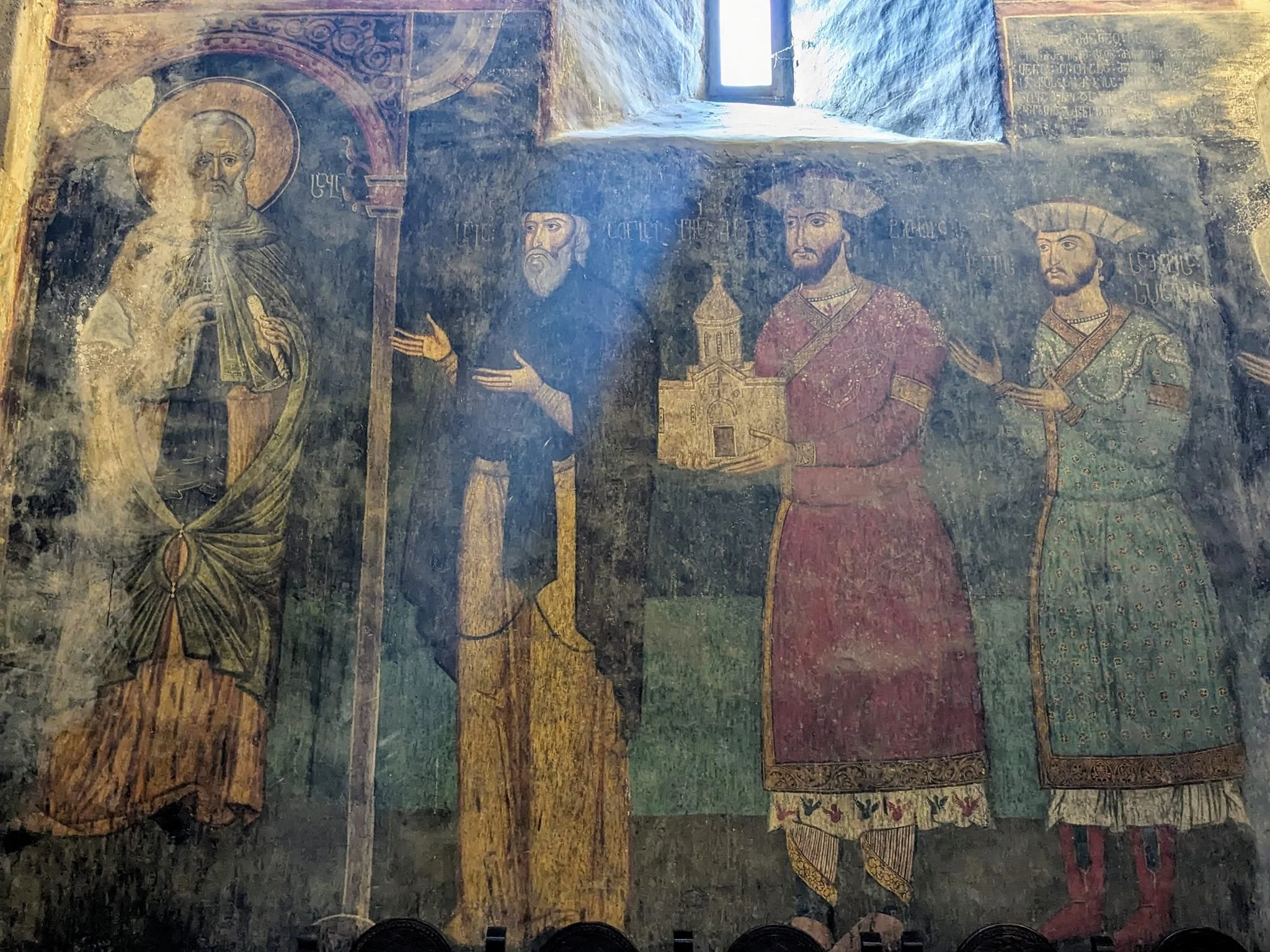Georgia
Tympanum, Jvari Monastery
I have been traveling in the Republic of Georgia in the last few days, and crossed into Armenia on Monday afternoon.
The green and hilly landscape here could not be a stronger contrast with sun-baked Egypt and Eastern Turkey. Wildflowers are blooming everywhere, and it’s cherry and mulberry season (I bought both from little tables set outside the front gates of houses and enjoyed them immensely). Haying season has just ended and one sees little stacks of fragrant grass everywhere (and the occasional farmer with his hand-rake catching up with his neighbors). Horse carts are in frequent use and the main traffic obstacle are free-range dairy cattle.
On Sunday, I was in Mskheta, Georgia’s ancient capital, set at the confluence of two rivers, with dramatic hills on three sides. This is the place where Christianity was introduced by St. Nino, a wonder-working Cappadocian slave girl in the fourth century. I saw dozens of “St Nino’s Crosses” on hilltops and at the entrances of villages—a cross with drooping arms, its two arms of grapevine bound together with strands of her hair. I went to the divine liturgy at the Svetitskhoveli Cathedral (the Cathedral of the Living Pillar) which is associated with a miracle of hers. The choir was wonderful, singing in a distinctive four-part style for which Georgia is famed.
I also visited Samtavro Convent, nearby, where St. Nino lived and built her first church, as well as Jvari monastery, situated on the crown of the highest hill overlooking the city. This is where she erected a cross that could been seen for many miles. All three places were busy, with lots of sincere Georgian pilgrims, lighting candles and saying their prayers. Priests fanned out among the crowds to strike up conversations and give blessings.
I continued on to Ateni Sioni Church, about an hour’s drive West, near Gori, where Stalin was born. The Georgians seem to have a knack for placing their churches in the most dramatic surroundings, and this one was located on the edge of a narrow gorge. There were very impressive late Byzantine-era frescoes there and the same kind of high dome that graced the churches in Mskheta.
I visited a similarly isolated monastery called Sapara, which also had striking frescoes, and ended at Vardzia, a cave monastery near the present border with Turkey that once included thousands of cave dwellings, and served for a time as the national capital.
There was a beautiful church carved into the rock that contained a famous fresco painting of Queen Tamar, a thirteenth century monarch who presided over the Georgian kingdom when it was largest and most powerful. Varzdia was sacked by the Mongols, and then abandoned after a devastating earthquake, but the surviving ruins are extensive, and monks were resettled in part of the site a few decades ago.


















